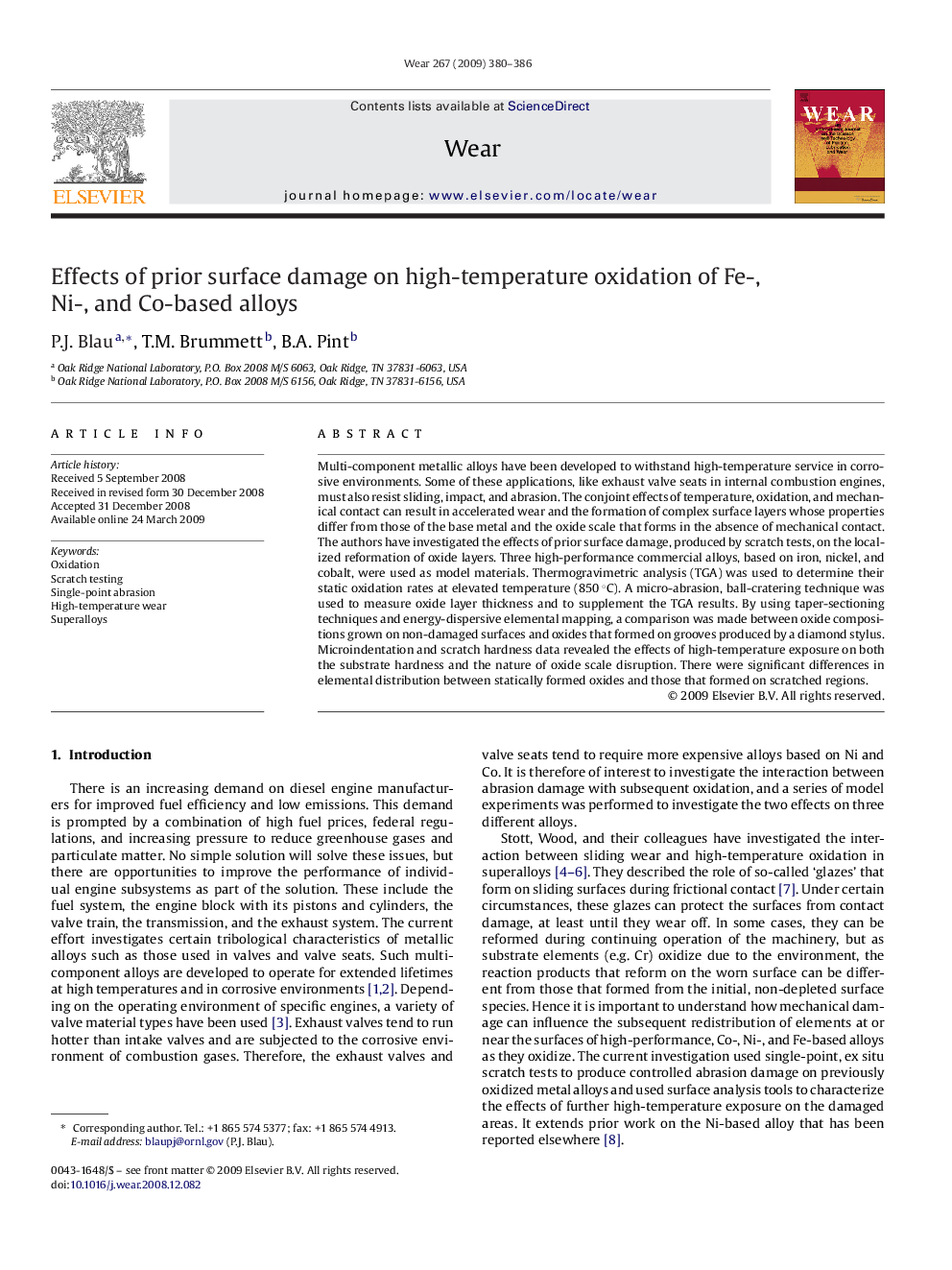| Article ID | Journal | Published Year | Pages | File Type |
|---|---|---|---|---|
| 618745 | Wear | 2009 | 7 Pages |
Abstract
Multi-component metallic alloys have been developed to withstand high-temperature service in corrosive environments. Some of these applications, like exhaust valve seats in internal combustion engines, must also resist sliding, impact, and abrasion. The conjoint effects of temperature, oxidation, and mechanical contact can result in accelerated wear and the formation of complex surface layers whose properties differ from those of the base metal and the oxide scale that forms in the absence of mechanical contact. The authors have investigated the effects of prior surface damage, produced by scratch tests, on the localized reformation of oxide layers. Three high-performance commercial alloys, based on iron, nickel, and cobalt, were used as model materials. Thermogravimetric analysis (TGA) was used to determine their static oxidation rates at elevated temperature (850 °C). A micro-abrasion, ball-cratering technique was used to measure oxide layer thickness and to supplement the TGA results. By using taper-sectioning techniques and energy-dispersive elemental mapping, a comparison was made between oxide compositions grown on non-damaged surfaces and oxides that formed on grooves produced by a diamond stylus. Microindentation and scratch hardness data revealed the effects of high-temperature exposure on both the substrate hardness and the nature of oxide scale disruption. There were significant differences in elemental distribution between statically formed oxides and those that formed on scratched regions.
Related Topics
Physical Sciences and Engineering
Chemical Engineering
Colloid and Surface Chemistry
Authors
P.J. Blau, T.M. Brummett, B.A. Pint,
